Abstract
Groman, Neal B. (University of Washington, Seattle) and Grace Suzuki. Quantitative study of endolysin synthesis during reproduction of lambda phages. J. Bacteriol. 86:187–194. 1963.—Endolysin is presumed to be a phage-induced enzyme participating in lysis through its destructive action on the host cell wall. A method for assaying endolysin is described, which was utilized in studying endolysin synthesis at 37 and 44 C by induced strains of K-12 (λ), K-12 (λtem), and K-12 (λ112). In all cases, endolysin was detected prior to the appearance of mature, intracellular phage and was detected earlier at 44 C than at 37 C. It was synthesized at a linear rate, as was phage, and both syntheses terminated at the same time. Surprisingly, endolysin also accumulated under conditions in which induced K-12 (λ112) exhibited lysis inhibition. Under these conditions, endolysin concentration per induced cell was 2 to 2.5 times that produced by normally lysing K-12 (λ). Since alterations introduced into the lytic process by temperature, mutation, or both correlate well with the timing and rate of endolysin synthesis, the data tend to support the concept that endolysin determines the kinetics of the process. However, the accumulation of endolysin during lysis inhibition suggests the need for alternative hypotheses. One hypothesis is that although endolysin action is the key to lysis some preliminary steps are required to release the enzyme so that it may contact its substrate in the cell wall. A second hypothesis is that basically the lytic process involves an alteration in the permeability barrier of the cell and that lytic enzymes such as endolysin have evolved as an auxillary but dispensable mechanism to this process.
Full text
PDF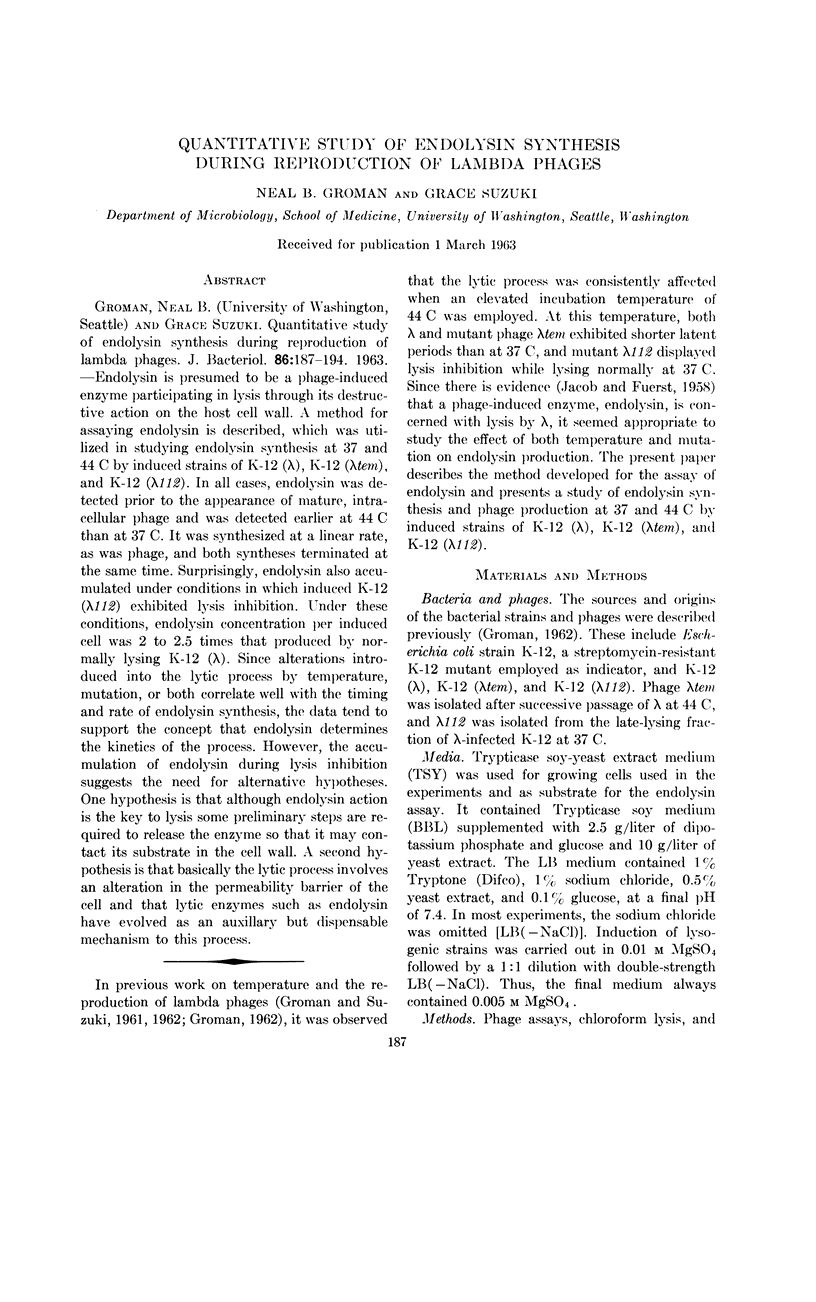
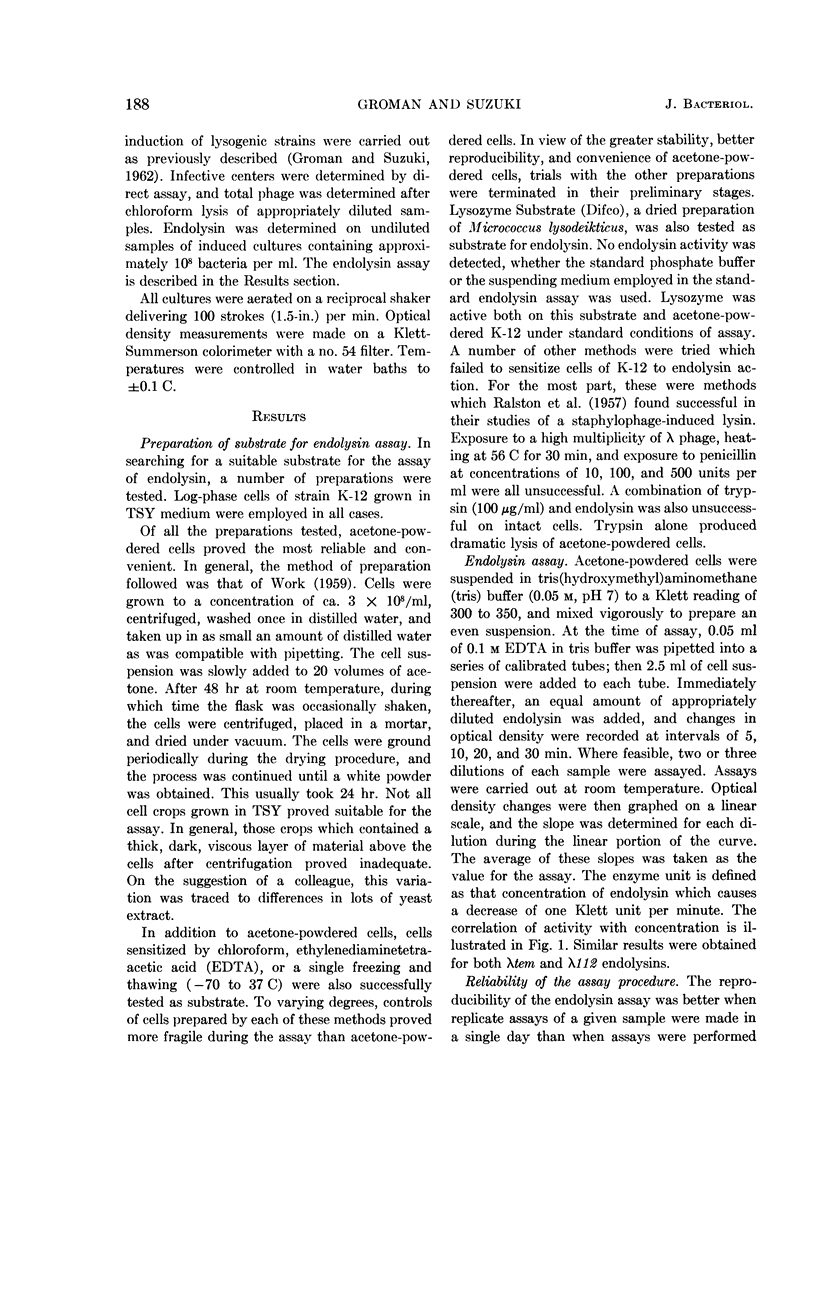
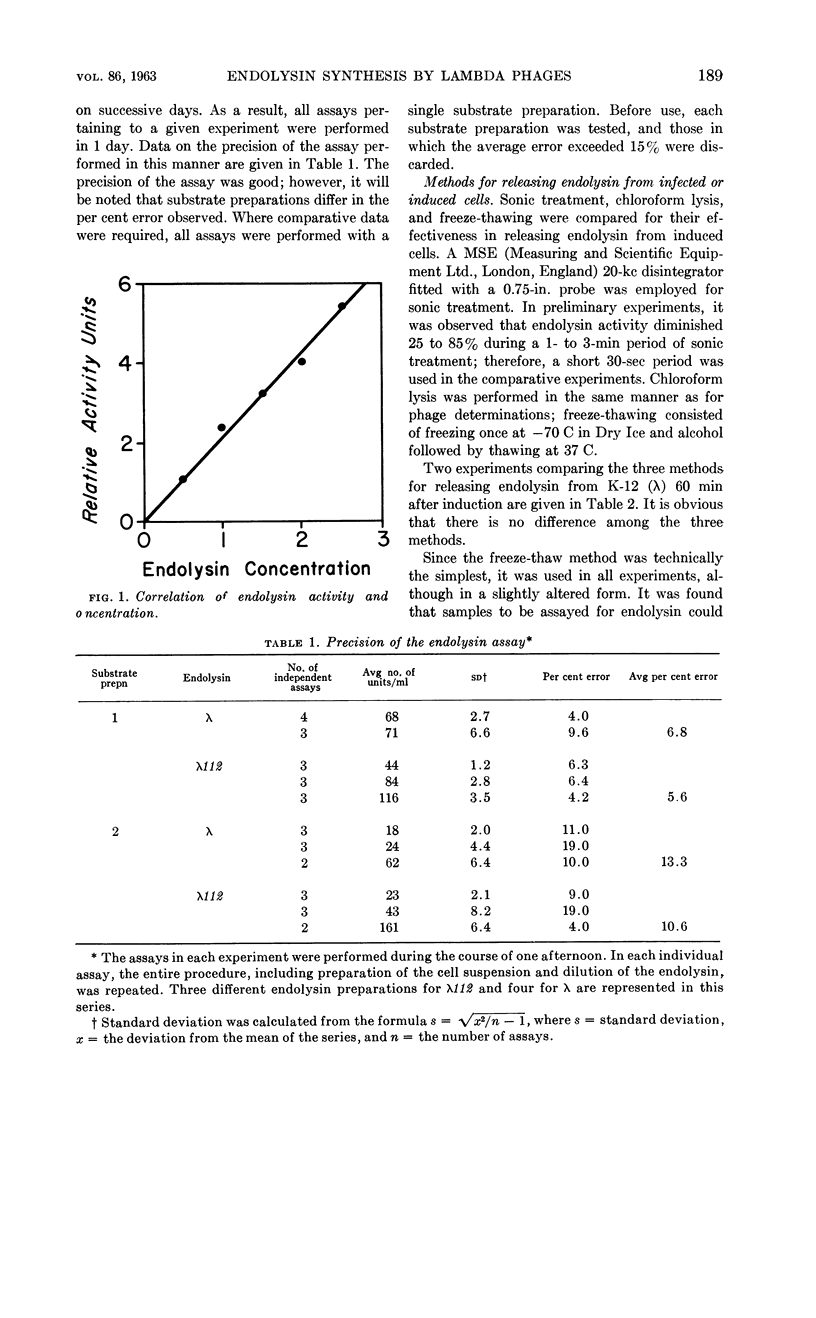
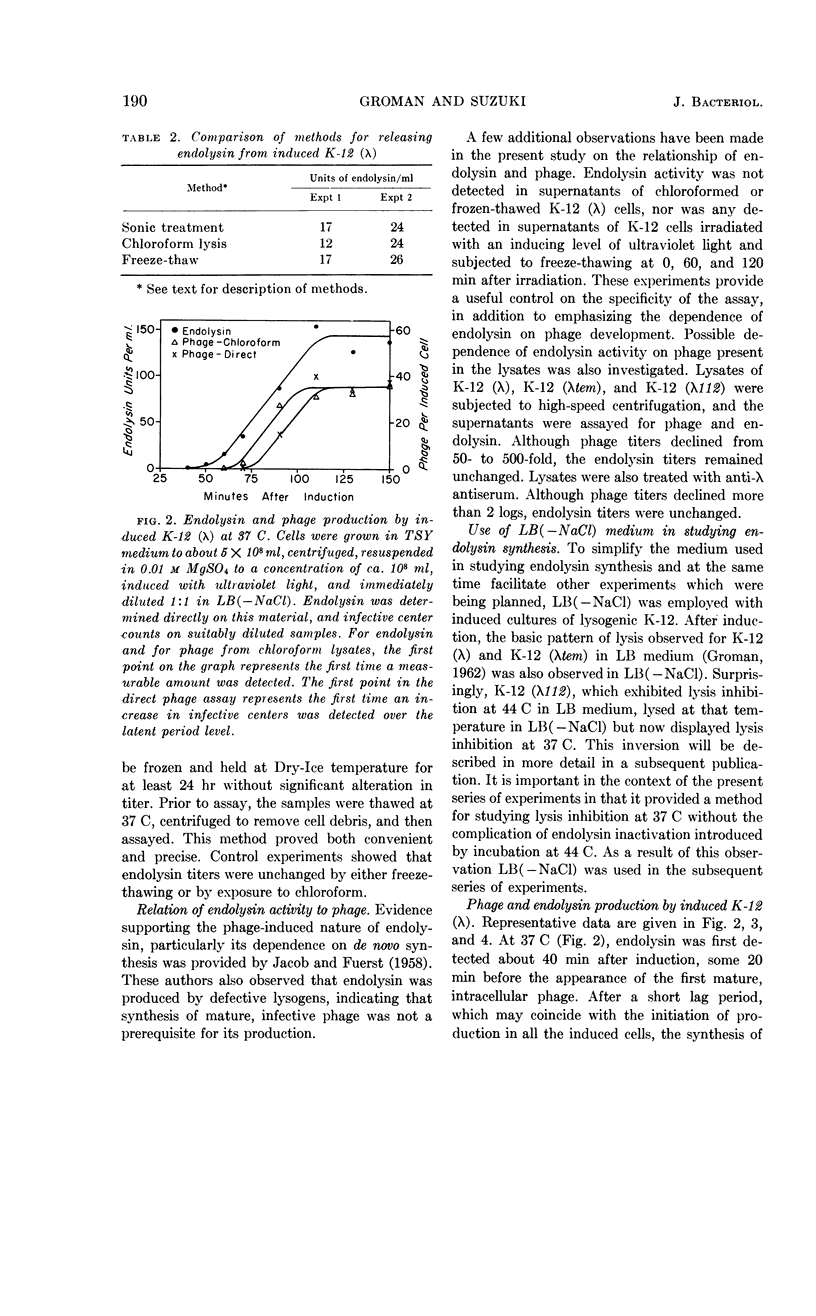
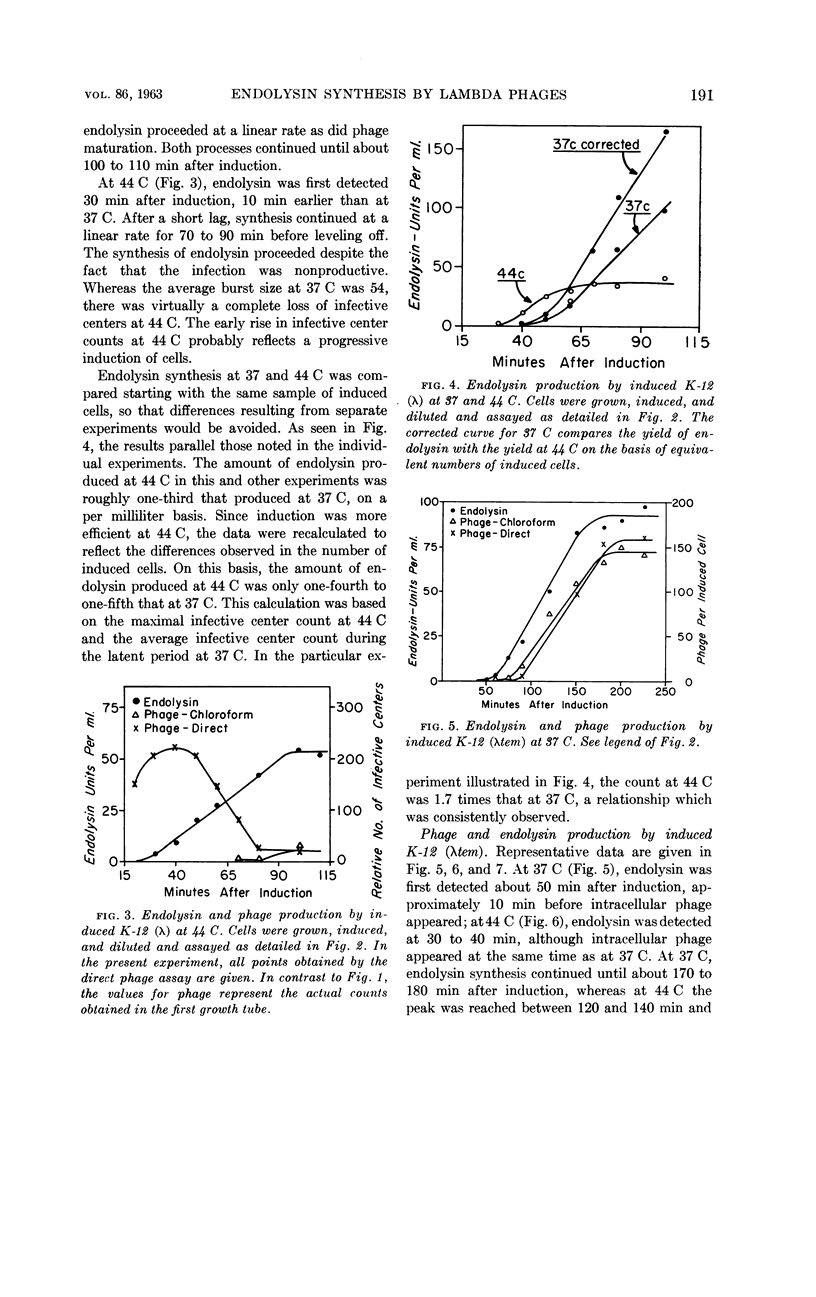
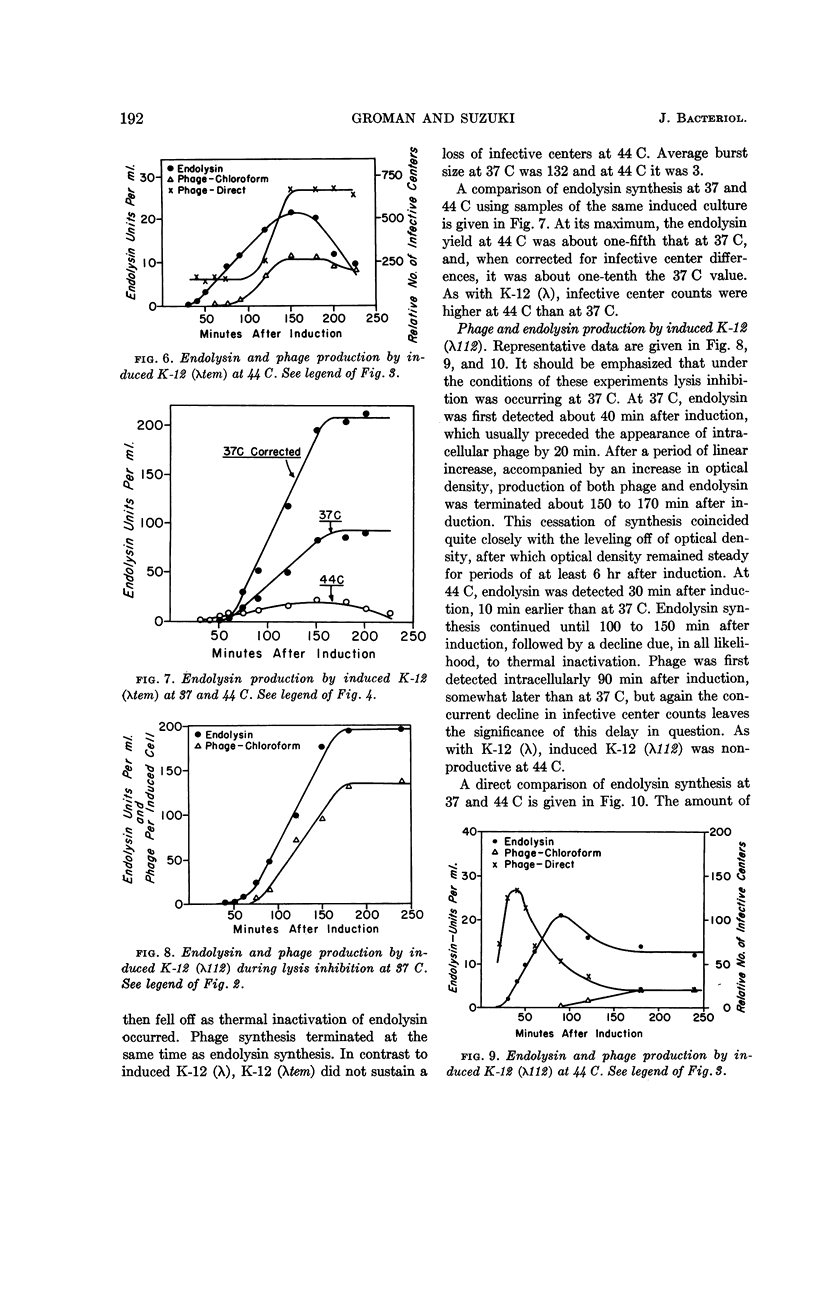
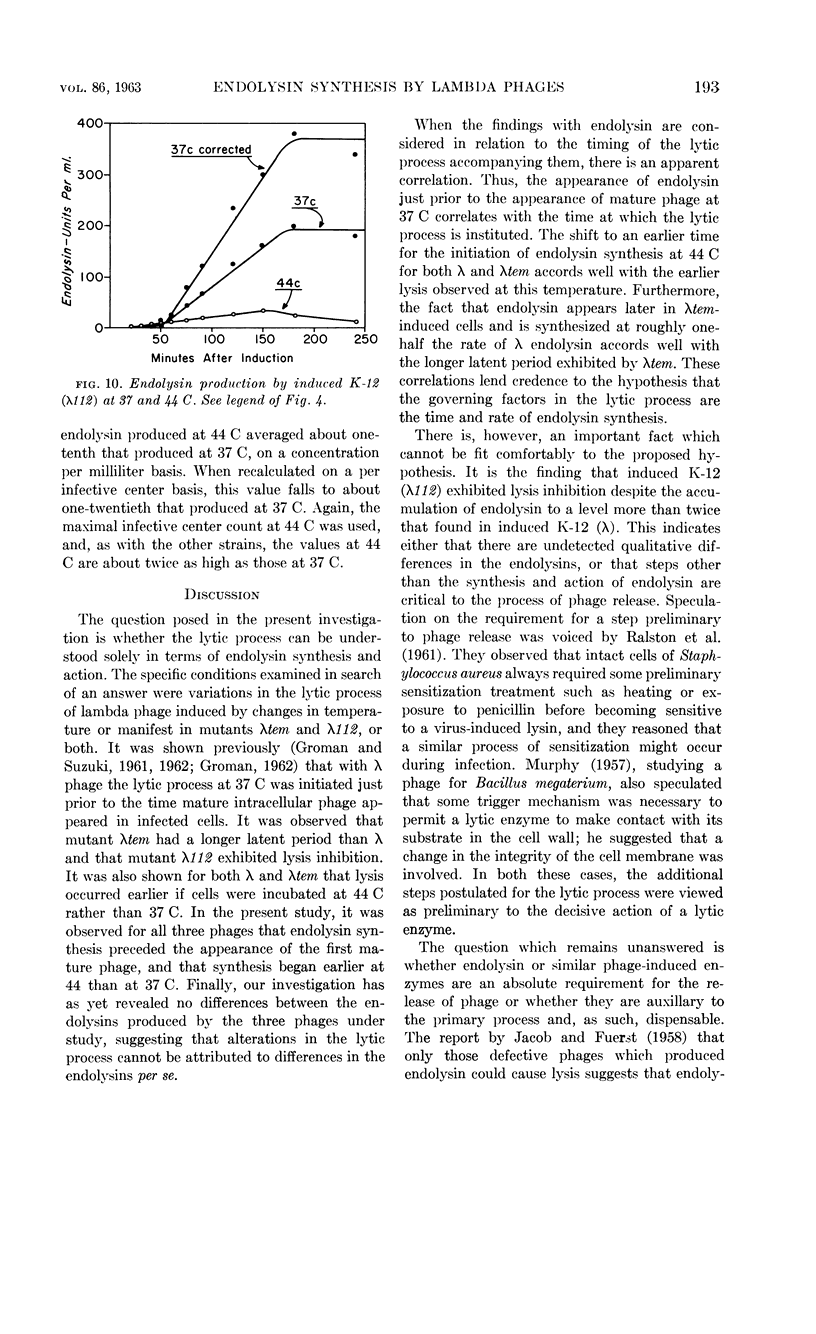
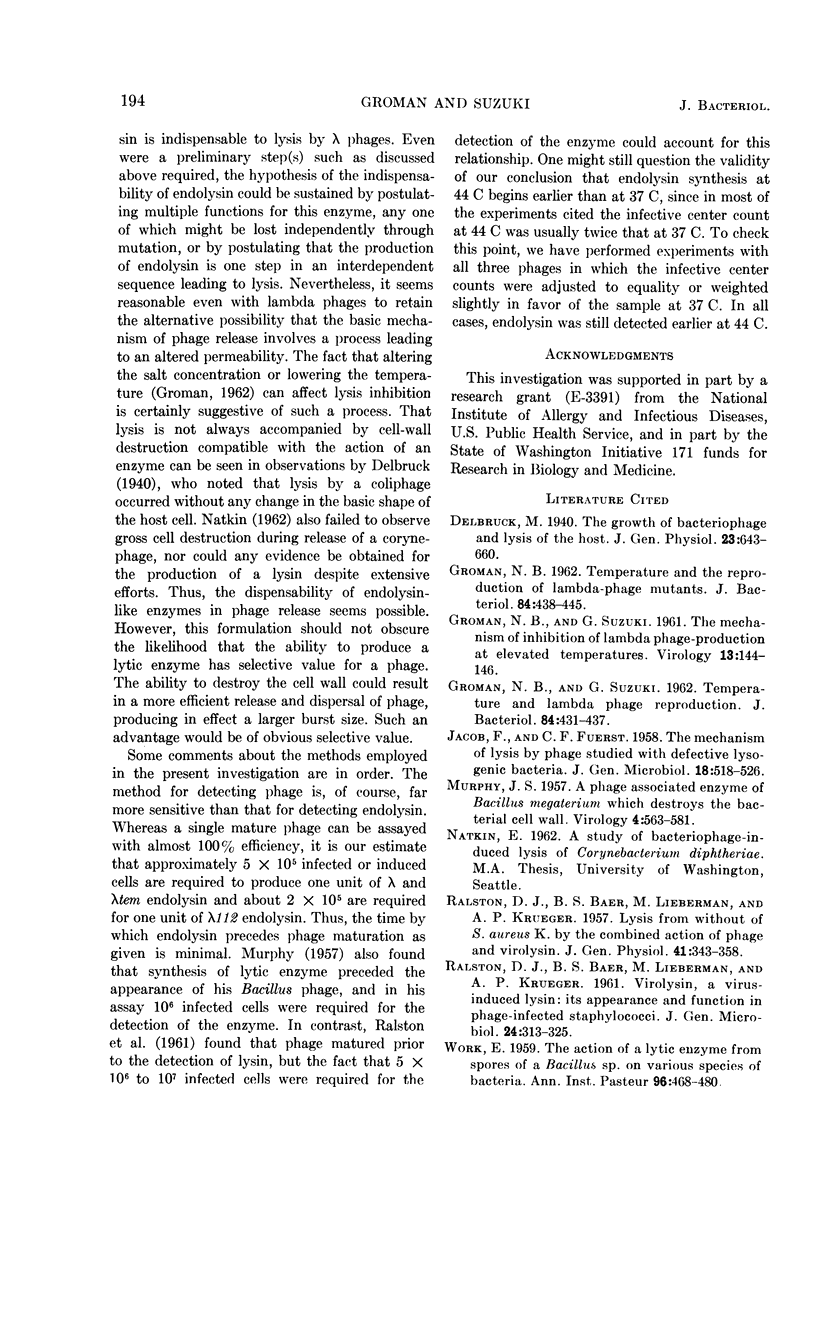
Selected References
These references are in PubMed. This may not be the complete list of references from this article.
- GROMAN N. B., SUZUKI G. Temperature and lambda phage reproduction. J Bacteriol. 1962 Sep;84:431–437. doi: 10.1128/jb.84.3.431-437.1962. [DOI] [PMC free article] [PubMed] [Google Scholar]
- GROMAN N. B., SUZUKI G. The mechanism of inhibition of lambda phage production at elevated temperatures. Virology. 1961 Jan;13:144–146. doi: 10.1016/0042-6822(61)90045-9. [DOI] [PubMed] [Google Scholar]
- GROMAN N. B. Temperature and the reproduction of lambda-phage mutants. J Bacteriol. 1962 Sep;84:438–445. doi: 10.1128/jb.84.3.438-445.1962. [DOI] [PMC free article] [PubMed] [Google Scholar]
- JACOB F., FUERST C. R. The mechanism of lysis by phage studied with defective lysogenic bacteria. J Gen Microbiol. 1958 Apr;18(2):518–526. doi: 10.1099/00221287-18-2-518. [DOI] [PubMed] [Google Scholar]
- MURPHY J. S. A phage-associated enzyme of Bacillus megaterium which destroys the bacterial cell wall. Virology. 1957 Dec;4(3):563–581. doi: 10.1016/0042-6822(57)90086-7. [DOI] [PubMed] [Google Scholar]
- RALSTON D. J., BAER B. S., LIEBERMAN M., KRUEGER A. P. Lysis from without of S. aureus K1 by the combined action of phage and virolysin. J Gen Physiol. 1957 Nov 20;41(2):343–358. doi: 10.1085/jgp.41.2.343. [DOI] [PMC free article] [PubMed] [Google Scholar]
- RALSTON D. J., BAER B., LIEBERMAN M., KRUEGER A. P. Virolysin, a virus-induced lysin: its appearance and function in phage-infected staphylococci. J Gen Microbiol. 1961 Mar;24:313–325. doi: 10.1099/00221287-24-3-313. [DOI] [PubMed] [Google Scholar]
- WORK E. The action of a lytic enzyme from spores of a bacillus on various species of bacteria. Ann Inst Pasteur (Paris) 1959 Apr;96(4):468–480. [PubMed] [Google Scholar]


